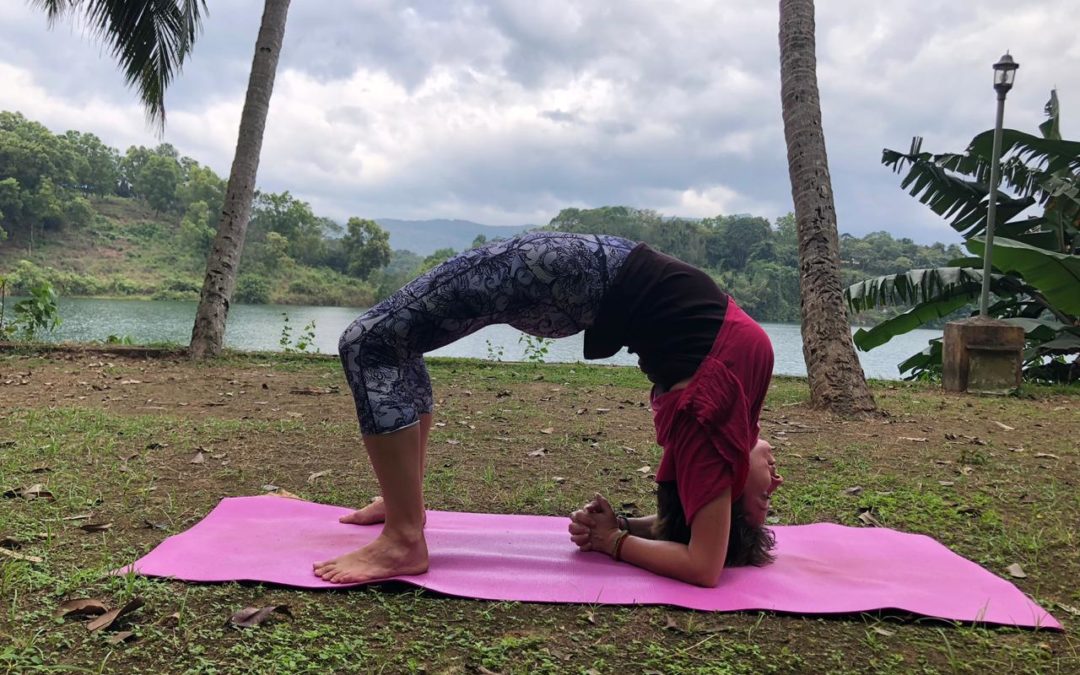
by Shuddha | Sep 19, 2020 | Blogpost
I first started my yoga home practice when I was doing my first Yoga Teacher Training in 2005. I had picked up an old copy of ‘The Concise Light on Yoga’ by BKS Iyengar from a secondhand shop, it was falling apart a bit with pages loose! I still have it on my bookshelf. In the back Iyengar gives some progressive yoga plans to do at home. I would lay out my yoga mat in my living area with my Iyengar book and flip back and forth to see what each pose was as I was still learning the Sanskrit names. I felt a special energy in practising by myself, I was able to tune into how I was feeling in each pose.
Since that time I have maintained a morning home practice. I follow a sequence I made for myself and interchange poses in the same category each day. I start with warm ups and Sun Salutes and conclude with an inversion followed by pranayama and Shavasana. I include some poses that give me a challenge to increase my strength, flexibility and/or balance.
A balanced home practice will include some warm ups, a forward bend, backward bend, lateral stretch, spinal twist and an inversion. This allows the spine to move in each direction and provides a counter pose for each position.
When we are in the silence of our own space or room we can be more aware of the sensations in our body and follow our intuition to guide us to what movement our body needs. Attending regular classes with a teacher is also important to get corrections in poses that we may not realise that we need. Being comfortable and confident to do our own practice means that we can roll out our mat anytime, wherever we are and keep up our yoga.
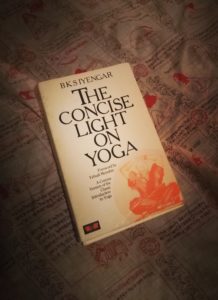
My original guide to home practice
Guidelines for doing yoga at home:
- practice on an empty stomach preferably in the morning
- do sufficient warm ups such as joint rotations or cat pose to prevent injury
- choose a space where you won’t be disturbed and put your phone on silent
- if possible use the same space every day as it helps to build up the energy there
- create a balanced practice as mentioned above
- be regular in your practice, either every day or the same days each week. It is advisable to have one day off a week
- be flexible in your approach so that you allow yourself a gentle practice if you are tired or injured
- For women who are menstruating take some rest days, towards the end of menstruation you can focus on forward bending asanas
I hope you have found this useful to inspire your home practice. If you have any comments please post below.

by Shuddha | Aug 10, 2020 | Blogpost
Trataka is a meditation technique where we choose an object as a tool for developing concentration (Dharana). Literally Trataka means to gaze steadily. It is also considered a Hatha Yoga cleansing practice as it has a purifying affect on the eyes. It is common to use a candle flame as the object to gaze at, especially for beginners, as it leaves an after impression in the space behind the closed eyes (Chidakasha).
The benefits of Trataka are:
- relieves nervous disorders, anxieties
- it is beneficial for shortsightedness or poor vision by strengthening the eye muscles if practiced daily
- develops concentration and memory
- leads into meditative states of mind
- expands consciousness
- relieves insomnia if practiced for 10-15 mins before bedtime
How to Practice:
Trataka involves both external gazing and internal gazing. To practice an object, such as a candle, is placed at eye level about an arms length away from you. Make sure there are no drafts in the room so that the candle will be steady. Gaze at the base of the flame while trying avoid blinking or moving the eyes. Start by gazing for 1 to 2 minutes only. Then close the eyes and concentrate on the after image of the flame in front of the closed eyes. The image may move, attempt to hold it steady. When the image has completely vanished open the eyes and gaze at the candle flame once more. Continue like this for 3-4 rounds.
The eyes may water which is natural and ok. When tears have formed you may close your eyes until the tears have dried.
On completion you may practice palming by rubbing the palms together until you have generated some heat and then cupping them over the closed eyes. Perform three rounds like this.
While practicing Trataka the brain has an opportunity to rest. By holding the object of concentration the mind is encouraged to become calm and quiet while the attention of the mind is channeled into one particular stream.
You may also practice on an object such as a flower, statue, crystal, a black dot on a piece of paper, a yantra or mandala. It is not advised to use the following objects as it may be too powerful a practice and result in mental disturbances: your shadow, a mirror, the moon, darkness or a crystal ball.
Techniques such as Trataka will be explored in my Thursday night Yoga Nidra and Meditation classes via Zoom. You can find out more or register on Eventbrite.
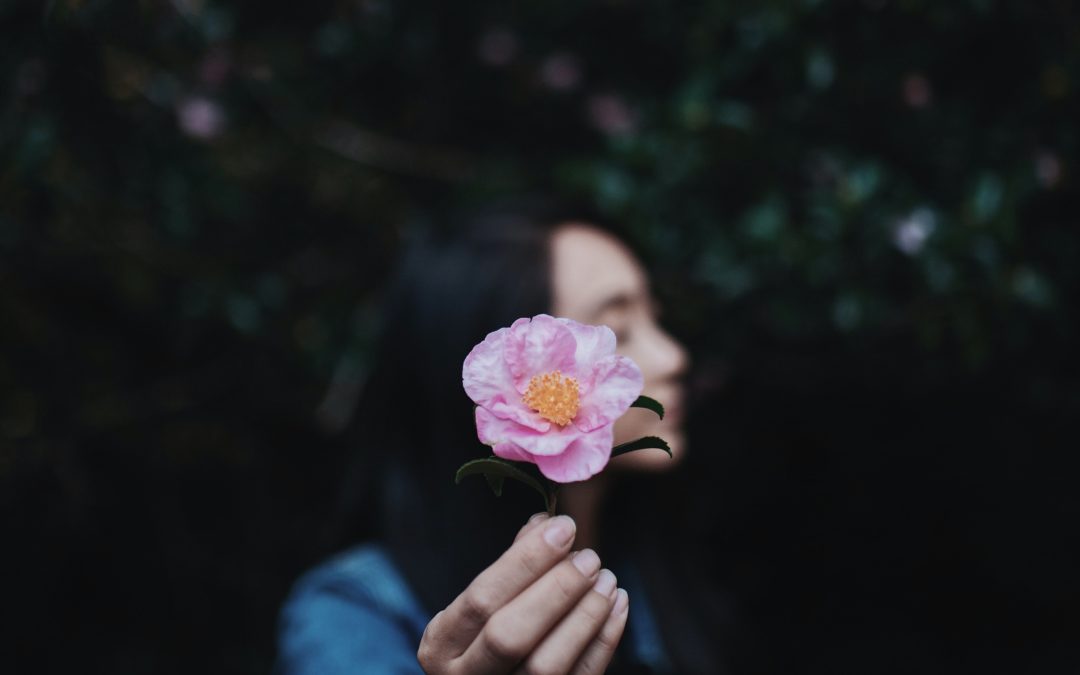
by Shuddha | Jun 30, 2020 | Blogpost
Principles which run contrary to yama and niyama are to be countered with the knowledge of discrimination.
BKS Iyengar
When the mind is disturbed by passions one should practice pondering over their opposites.
Swami Satyananda Saraswati
When we are overcome by emotions and are unable to control the disturbances in the mind the Yoga Sutras of Patanjali offer us a solution. Cultivating the opposite emotion to what is present is called Pratipaksha Bhavana. This is an amazing tool to cultivate a temperament that can overcome anger, lying, dullness, anxiety and much more with the right knowledge and awareness.
Paksha means to take one side. Pratipaksha means to take the opposite side. Bhavana means feeling, affecting or manifesting.
We are able to overcome a negative trait within ourselves by developing a positive state in its place.
Perhaps we are feeling anxious because we have a presentation coming up, we are about to open our tax bill or are in a situation where we desire to impress someone. When we can step back from this emotion and observe it we can create space to change our perspective. After identifying the feeling we can then choose to create a different, more positive response. We can turn the anxiety into excitement. Because the energy of excitement and anxiety are both high this can be an easy way to re frame the situation. We can turn the anxiety into a feeling of purpose, that we are wishing the best for ourselves and know that when we are relaxed we are in a calm and creative mindset. With repetition it becomes easier to switch our response as new pathways are created in the brain.
In the context of the Yoga Sutras Patanjali is guiding us to adhere to the Yamas and Niyama (ethical social and personal codes) by applying Pratipaksha Bhavana when obstacles present themselves in our lives. We are in essence being compassionate to ourselves. We recognise the minds habitual reaction to a situation, without getting angry or irritated by it we just let it go and put our energy into feeling calm and at ease instead. Just as if we are with a friend and they are confiding their troubles with us we can encourage them to see things clearly with a relaxed state of mind. Effectively Patanjali is teaching us how to counsel ourselves, becoming our own therapist. Creating inner harmony.
Aggression – Friendliness
Jealousy – Appreciation
Restlessness – Contentment
When we are not able to observe our mind it is easy for us with the ups and downs that life offers to become a bundle of emotions. In that state we are so overwhelmed by our feelings that we can not see things clearly. If we feel strong hate or dislike towards someone we can switch our mind to loving or caring about them. We do not have to like a person to love them. There may be aspects of people who are close to us’ personality that we don’t like. Still we can extend love and compassion towards them. Every individual’s personality is shaped by their past karmas and environment. These are observable just as our mind is. With this understanding we can see that we all have an innate pure nature.
Developing the attitude of friendliness even if you don’t have interaction with the person you felt aggressive towards that person is no longer an enemy in the mind. The person become an ordinary, neutral person in your mind. Through practising Pratipaksha Bhavana a negative trait develops into a positive trait.
We integrate this into our life by trying. Even if we try and don’t succeed at first at least we have made a conscious effort to rewire our brain and attitude to a positive and kind intention.
Right understanding, dispassion, discrimination, detachment and sattwa. These are the yogic principles that we draw on when we apply this to our lives. Having the right understanding that we can observe our mind and change our reactions. Being dispassionate when strong emotions boil up. Being discriminative to our thoughts and feelings, to be able to see what is valid or invalid. Detaching from the emotional charge that we place on situations and people in our lives, letting go of cravings for what we don’t have. Practising sattwa, purity, to make a compassionate effort to live our lives with ethics and integrity.
We have choice in how we react to situation in life. When we realise this and practice cultivating the opposite to our negative ingrained response we are in a position of empowerment.

by Shuddha | Jun 6, 2020 | Blogpost
My new recordings of Mantra Meditation are available this winter on Bandcamp!
To let you know a bit more about the practice I am sharing the benefits of Ajapa Japa for you. This meditation technique is popular because there are many tools to focus on. The breath, visualisation of the pathway of the breath and the mantra. For this reason it is easier to stay on track. Using the audio you are guided through the practice. If the mind drifts or gets distracted it can be gently guided back to the technique.
Japa means the continuous repetition of a mantra. When the suffix ‘A’ is added the meaning changes to the spontaneous repetition of the mantra. With regular practice of this meditation technique the mantra will repeat itself spontaneously without conscious effort.
The method of mantra meditation traced back to the Yoga Upanishads dating between 100 BC and 1100 AD. In the Higashiosaka Upanishad it is stated that the sound ‘So’ goes with the in breath and ‘Ham’ with the out breath. It is this mantra ‘So Ham’ that is commonly used in Ajapa Japa meditation.
Benefits of Ajapa Japa:
- Releases mental tension thus removing the cause of most mental and physical ailments
- Creates peace and calm in the mind
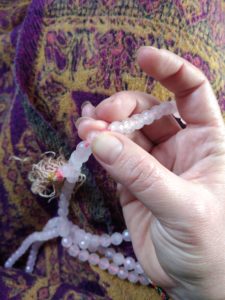
How to hold a mala
- Through the repetition on the mantra pranic energy is vitalised
- Has been found to reduce hypertension, fever and anxiety
- Can lead a person to the higher states of meditation
- Safe for everyone to practice
- By-passes the analytical process
- It is a pratyahara practice (sense withdrawal) that can lead to deeper states of meditation
- Visualisation of the breath in Sushumna Nadi activates the energy in the chakras
- If practised sincerely and regularly it will bring hidden desires, fears and complexes of the mind to the surface where they can be observed and released
Swami Satyananda says that,
‘Ajapa Japa is a complete sadhana in itself which can take an aspirant from the most elemental level of body and environmental awareness to the highest stages of meditation.’
Elements of the practice
Ajapa Japa combines Ujjayi pranayama (victorious breath), awareness of the frontal or spinal pathway of the chakras and mantra, in this case So-ham.
Ujjayi pranayama is performed by slightly constricting the glottis in the throat so that the inhale makes a slightly snorey or oceany sound. The exhale is a relaxed exhale. It takes some practice to master this breath. The sound should just be audible to you. This breath is calming and soothing for the mind.
In stage one and three the breath is visualised moving up and down the frontal passage from the naval to the throat and then the naval to the third eye respectfully. In stage two the awareness is of the breath within the spine. The pranic energy flows with our breath and our awareness activating the chakras and sushumna nadi (the central passage within the spine that Kundalini Shakti rises through).
The mantra So-ham is a universal mantra meaning that it can be used by anyone. A personal mantra is one that is given to a student by their Guru and must not be shared with others. So-ham is a simple mantra correlating to the sound of the breath. Literally it means ‘I am that,’ referring to the timeless universal energy.
If you have a personal mantra and would like to use it for this practice once you are confident with the sequence you can meditate independently without and audio using your mantra, Longer mantras such as the Gayatri can also be used.
How to practice
When learning the practice it is useful to be guided in the practice so that your mind can relax and not question if it is doing the meditation correctly. Sit in a comfortable position. You may sit on the floor with some cushions under the buttocks if you are an experienced meditator. Elevating the hips like this helps to avoid back pain. You can also choose to sit in a chair or sit against a wall on the floor with cushions lifting the hips. Start with a position that you feel you will be able to maintain throughout the practice.
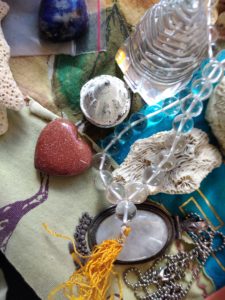
Sumeru
Using a Mala
If you have a mala (similar to rosary beads) you can turn one bead for each mantra of so-ham. Hold the mala between the thumb, middle and ring fingers. You can either rest the hand on the knee or hold the mala close to your heart. It is best to avoid the mala touching the ground as it is a sacred item that you are infusing with your energy. It is important to not cross the sumeru which is the last bead from which the tassel emerges from because it is considered bad luck.
How often should I meditate?
It is recommended to meditate regularly opposed to sitting just once for a long time. Start by using an audio and then practice without the audio for 10 minutes per day. You can then increase your sit by 5 minutes each week until you reach a length of meditation that you can maintain easily and feels beneficial for you.
Downloading the Audio
Guided meditations are available on Bandcamp as an album with Stages 1-3 of Ajapa Japa plus 3 Yoga Nidras. This album is available for the season of winter/summer (depending on which side of the equator you are on!). New audios will be available next season. I hope you enjoy! You can always contact me with any questions or for more guidance.
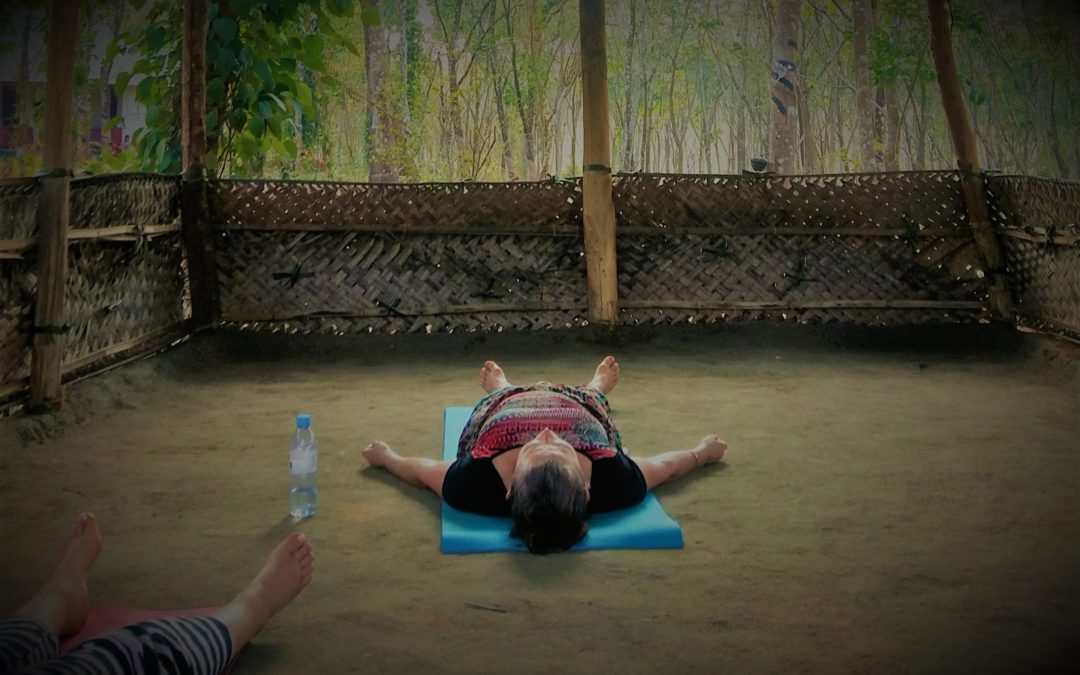
by Shuddha | May 23, 2020 | Blogpost
Yoga Nidra means Psychic Sleep and is a method of guided physical, mental and emotional relaxation. Each step of Yoga Nidra has an important purpose to guide practitioners into deeper levels of their consciousness. It is a Tantric technique which is derived from an ancient practice called Nyasa where Mantra is combined with rotation of consciousness through the different body parts. With training Yoga Nidra is a way to remain aware and alert in the dreaming and deep sleep states of the mind.
When we are totally absorbed in our inner world of sensory impressions, feelings, emotions and thoughts and we see a person, object or situation we are not really seeing them. Our view of someone is completely skewed by these associated thoughts and representations in the mind. It is as though we are dreaming although we are wide awake. If instead we are absorbed in the witnessing attitude of the drashta the sense of “I” is softened and with that the strong desires and aversions of the mind dissolve. It is this state that Yoga Nidra encourages.
Yoga Nidra provides a complete state of relaxation for the body and mind, more so than conventional sleep where the mind is still processing impressions of the mind. It is said that one hour of Yoga Nidra is the equivalent to 4 hours normal sleep!
Some of the benefits that we can experience through a regular practice of Yoga Nidra are:
• Leads to a state of Meditation
• Can eradicate deeply embedded psychological problems, complexes, neuroses, inhibitions
• Helps to eliminate psychosomatic ailments
• Has a tranquillising effect that can remedy insomnia and induce deep sleep
• Rejuvenates the physical, pranic and mental levels of our being
• Increases intuition
• Increases memory and learning abilities, allows a person to retain information more readily
• Decreases stress and anxiety
• Has been used effectively in cancer treatment
• From directing the energy away from the senses prana is liberated, thus the psychic and vital pranas in the nadis are balanced
• Creating a free flow of energy in the pranic body allows for healing tissues, glands and organs
• Releases samskara (deeply embedded impressions in the mind)
Stress Relief
Yoga Nidra allows the Sympathetic nervous system which is our fight and flight response to rest. The Parasympathetic nervous system becomes more dominant, rest and repair, when the body and mind are completely relaxed. Especially in Western society everything is fast paced and there is an emphasis on productivity. We often don’t give ourselves the opportunity to relax and feel OK to do nothing. In Yoga Nidra feel good hormones are released, we can feel revitalised and approach our day after a session with a new perspective.
Healing
In an ancient medical science such as Ayurveda from India, disease is not investigated just symptomatically, but instead is traced back to up to 9 years before the symptoms started, to understand what was happening in the persons life at that time on mainly an emotional level. Then information is gained to understand why an illness manifested in the body and the mind. Through the practices of Yoga Nidra and Meditation we are able to reflect, analyse and let go of events that happen in our lives to minimise the samskaras (deeply embedded impressions in the psyche) in the mind. Yoga Nidra effectively releases impressions of the past and anxieties about the future.
Scientific studies have revealed that Yoga Nidra is a powerful healing tool is illnesses that may be psychosomatic such as allergies, chronic pain, depression, PTSD, insomnia, asthma and high blood pressure. These conditions are often a result of stress, anxiety and tension of which the cause is found in the subconscious or unconscious mind. By structuring a Yoga Nidra specifically for a person who is suffering from one of these diseases their health physically and mentally can be greatly improved.
The power of Affirmation
There is a lot of information and books about the power of affirmations. In Yoga Nidra the Sankalpa is a potent tool to give energy to what we wish to create in our lives. It raises our level of vibration and actively manifests our reality. When our mind in in the Theta brainwave state we have access to the subconscious mind just as in hypnotherapy. In Yoga Nidra we plant a positive seed in the mind at the beginning of the practice. When we repeat it at the end of the practice the mind is generally in a deeper state of consciousness and we are watering that seed of positive intention.
In Yoga there is a concept called Iccha Shakti, translating as willpower. When we can harness this power we can overcome any obstacle in life and achieve healing and our goals. Our thought processes, whether they are conscious or unconscious, need to be aligned. Our intellectual mind can only achieve so much. If our subconscious and unconscious minds are in conflict with our conscious mind whatever change we try to create consciously will not be effective and will not influence our emotional state. Too much reliance of the intellectual mind becomes a barrier to change.
Swami Satyananda says that anything can fail us in life but not our sankalpa. The sankalpa reaches deep into the layers of the mind and initiates strong, focused motives that the psyche can then act upon. It works as a bright illuminating light in the deeper parts of our mind, dispelling conflicting thoughts and emotions that are obscuring our path to reach our goal. As though light particles are banding together to form a single pointed laser beam, the sankalpa has the potential to collect our subconscious energy for a positive intent.
Yoga and Cancer Management
When a person is diagnosed with cancer we can imagine the emotional stress and pressure that in inflicted on the psyche. In that moment a person has to come to terms with facing death. If a person does not have strong faith or acceptance of death this time can drain all the willpower from a person which can result in depression and insecurity. By practising Yoga Nidra a patient can relax the body and the mind even in this extremely stressful situation. Fears that have a deeply negative influence on the immune system can be expressed in Yoga Nidra on the mental screen of the mind. In the relaxed state they can be witnessed and neutralised. Visualisation can be used therapeutically to enhance healing and the regeneration of the body and mind.
The rotation of awareness through the body reduces over stimulation of the parasympathetic nervous system, creating relaxation, enhancing blood circulation and increases pranic levels. By visualising the flow of prana in the body the prana can be redirected for healing and building defence mechanisms to repair and regenerate cells. Awareness of the chakras also activates prana so that the overall reserve in the body in increased.
How to Practice Yoga Nidra
Initially it is beneficial to to be guided through the practice of Yoga Nidra either in class or by listening to an audio recording. Eventually when you feel confident you can practice by yourself without a recording.
The most benefit comes from a regular daily practice, especially if you are using it therapeutically. Make a regular time each day to set aside and listen, in place that you will not be disturbed. You will notice the benefits of Yoga Nidra very quickly in your life, by better sleep, a more relaxed attitude and a refreshed mind.
You can purchase my recordings on Bandcamp: https://shuddhachittam.bandcamp.com/
I also have some free tracks on Youtube. You can find the links to these in the footer below.
Do Yoga, Be happy!
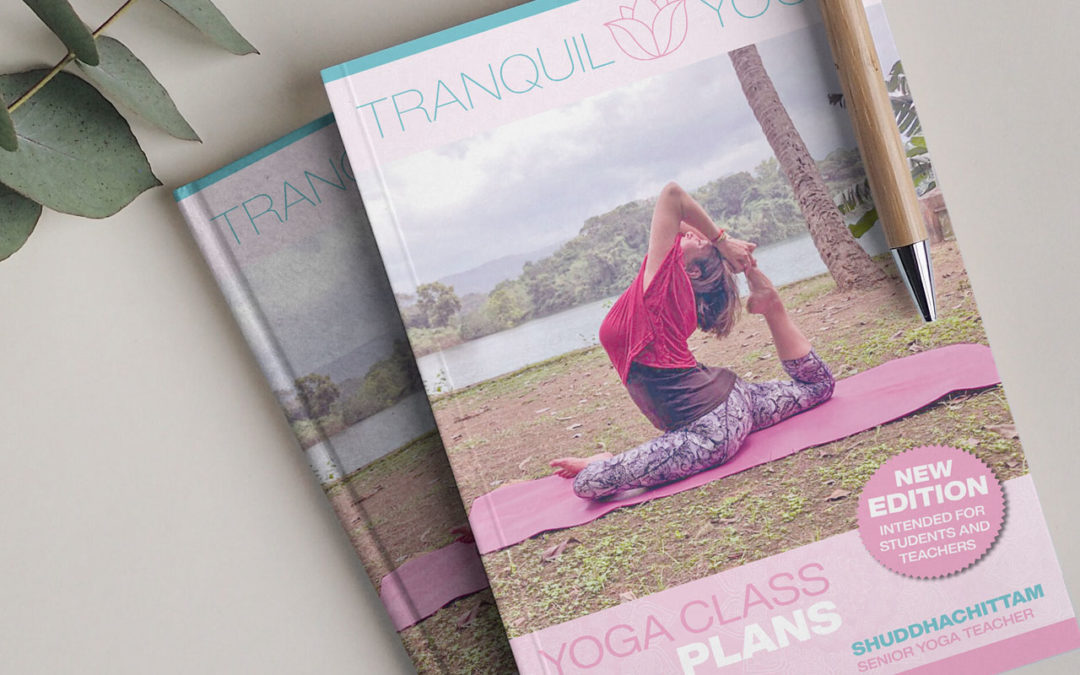
by Shuddha | Apr 30, 2020 | Blogpost
Hi Everyone!
I have created a new edition of my eBook Yoga Class Plans which includes the name of yoga poses in Sanskrit and now also in English. It is available for purchase on Amazon.
Yoga Class Plans is a book of over 100 yoga sequencing to inspire your Yoga teaching journey or personal practice.
For Teachers…
As Yoga teachers we go through cycles, when we are more inspired than at other times. Looking over our old class plans is a way to refresh our ideas and themes for our classes. In this book my wish is to provide teachers yoga class plans that will save you time preparing for classes and create themes for your sessions.
As an inspiration guide to yoga home practice…
This book with provide you with a vast array for Yoga practices to keep you motivated to keep progressing on your Yoga journey. Learn new poses and sequences to keep your practice fresh.
Included is a beginners series, intermediate, therapeutic and a series to activate the Chakra system.
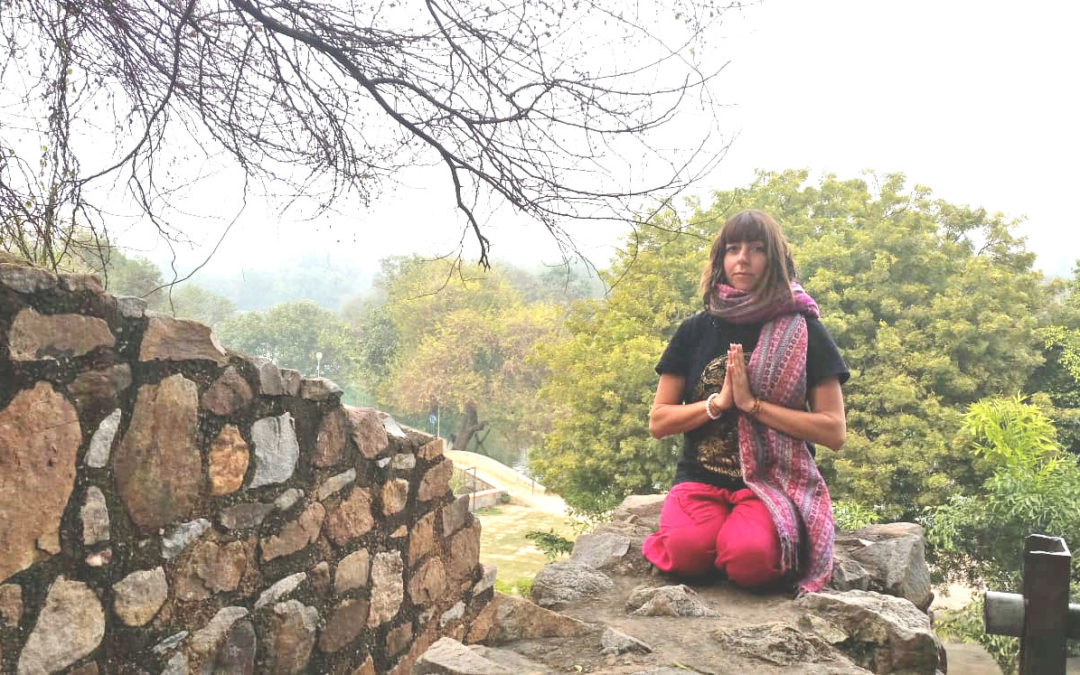
by Shuddha | Apr 30, 2020 | Blogpost
Living life with Ethics
When we live our lives following ethical behavior as much as we can the mind is more relaxed and free. If we have lied or taken something without asking some part of the mind is held in the concern to not be discovered for what we have done. If we act and speak truthfully for example then we are more at ease with ourselves. Then we not only become better people, more able to help others, we also are an example to others to live a meaningful life.
The Yamas are the external codes that relate to our interactions with others in society. They are:
Ahimsa – non harming
Satya – truthfulness
Asteya – non stealing
Brahmacharya – sexual moderation for lay people and for Sannyasins/Monks/Nuns Celibacy
Aparigraha – non grasping
These ethics relate on the level of thought, motivation, action and speech.
Ahimsa is non harming on all of these levels. Even when we think of harming another sentient being then we are creating negative energy within ourselves. If it is a time that we feel anger then it is actually ourselves that we are harming more than the other. When this is regarding talking about a person whom I may not be so pleased with at the time I ask myself would I feel OK saying what I am intending to say about them if they were present listening? What we share with our friends when we are dealing with difficulties should be something that we could also say to the person. Then there are no feelings of guilt or remorse over what we have said and it encourages us to communicate with kindness and compassion. When we have difficulties in life it is most often our reaction towards the situation than needs remedy, not the person or situation.
As mentioned above when will are truthful to ourselves and other then the mind is at ease. The mind can be cleared more readily of impressions as we are not concerned about having to keep up a facade or false reality that we have created.
Non stealing is explained simply in Buddhist philosophy as taking something that was not given to us. Next time you are in a situation where you question whether you are stealing ask yourself that question, was it given to you?
Brahmacharya in a traditional translation means celibacy or continence. From a yogic viewpoint celibacy allows one to channel their sexual energy for higher purposes such as yoga and meditation practice. The parallel precept in Buddhism for lay people is no sexual misconduct that includes non consensual sexual activity, infidelity or having relations with someone who has taken vows of celibacy.
Aparigraha means non grasping. This is simply not taking more than we need. When we take more than we need we can question ourselves, what is the motivation behind this? Is it self cherishing, attachment to material objects, possessiveness, fear? This Yama encourages us to simplify our life, letting go of the tendency to hoard possessions. In Buddhism it is encouraged before death to give away all of our belongings so that we can move on to our next realm or rebirth with an easeful mind. Seeing as our time of death is uncertain we can take a bit of this concept into our everyday life and notice the benefits of simplicity.
With the arising of Right View, Right Thought comes to be.
With the arising of Right Thought, Right Speech results,
With the arising of Right Speech, Right Action occurs,
With the arising of Right Action, Right Livelihood occurs.
With the arising of Right Livelihood, Right Effort appears.
When Right Effort arises, Right Mindfulness comes to be…
Ajarn Tong Sirimangalo, 2012, pg 55
The Niyamas are the internal codes, what we do when no one is looking. They are:
Sauca – cleanliness
Santosha – contentment
Tapas – austerity
Swadhyaya – self study
Ishwarapranidhana – surrender to a higher consciousness
We can imagine that if our surroundings are a mess and unclean the mind is not at ease. Also it is an unfit environment to practice sadhana (spiritual practice). By having a clean environment we are also practicing self-care.
Santosha can be a difficult Niyama to practice. It is being contented with what we have and situations in life. Being OK when we are unable to change things that we would like to. In my life I try my best to practice it. There are some situations in life where we do need to make changes. For example, if we are in an abusive relationship or a dangerous situation then we must use our common sense. At other times it may be that we just have desires and cravings. Then we can change our mindset of the situation to be OK with it.
Tapas is doing something hard for some benefit, in Yoga, this relates to spiritual benefit. An everyday life example could be giving up coffee if we drink too much of it. Giving it up can be hard, this is our tapas. When we have cut back or given up coffee we will feel the health benefits and this is our reward.
Swadhyaya means self study. This can either be contemplation, analytical meditation, reading spiritual books or listening to inspiring lectures. In this way we are furthering our spiritual evolution by keeping ourselves inspired and challenging our conceived beliefs.
Ishwarapranidhana means to surrender to higher consciousness. Everyone has a different belief of what a higher consciousness may be. To some, it may be universal energy, Mother Earth, God, Buddha etc. The main concept here is that we are creating humility to see that there is something greater than ourselves. This can allow us to gradually chip away at our egotism and self-cherishing.
In Buddhism the 5 basic precepts are very similar to the Yoga Yamas:
To refrain from taking life, killing any living creature
To refrain from taking what is not freely given
To refrain from misuse of the senses or sexual misconduct. Overindulgence in sex or committing sexual offences
To refrain from wrong speech. Lying or gossiping
To refrain from intoxicants that cloud the mind. Drugs or alcohol
When we adhere to personal ethics we become nicer and more trustworthy people. If a person has a tendency to harm or kill living creatures there will be a sense of fear around them. If the concept of the Yamas and Niyamas are new to you a good way to integrate them into your life is by taking one per week or per month. Perhaps you can write it somewhere that you can see it every morning and then at the end of the day reflect on whether you have been able to adhere to it. If you have slipped up send yourself some compassion and with a sense of remorse make a resolve to do better the next day. Even if we have been practicing morality for a long time this is still a nice practice to add to your sadhana.
Reference:
The One Way Path to Nibbaana, Venerable Ajarn Tong Sirimangalo, 2012











Recent Comments